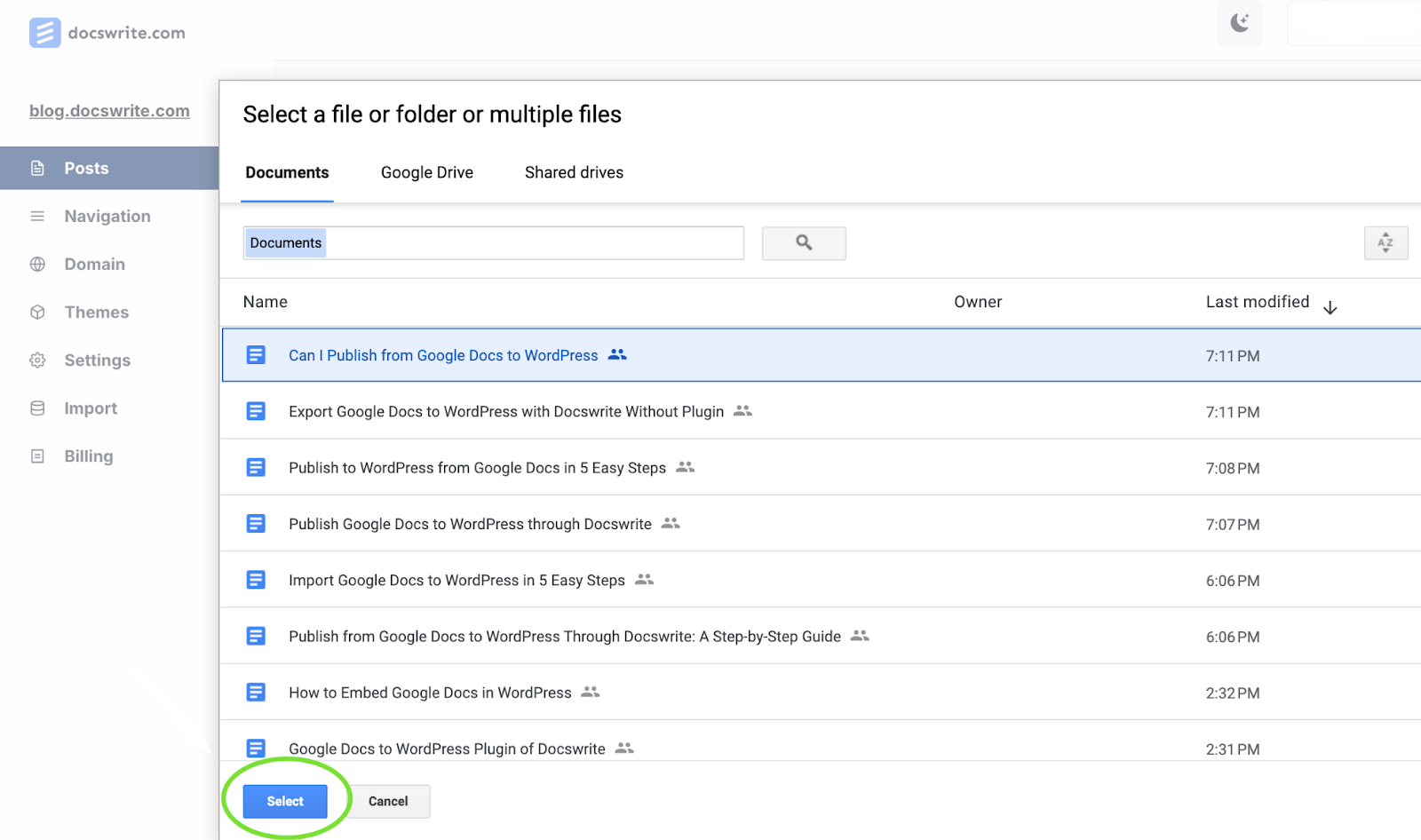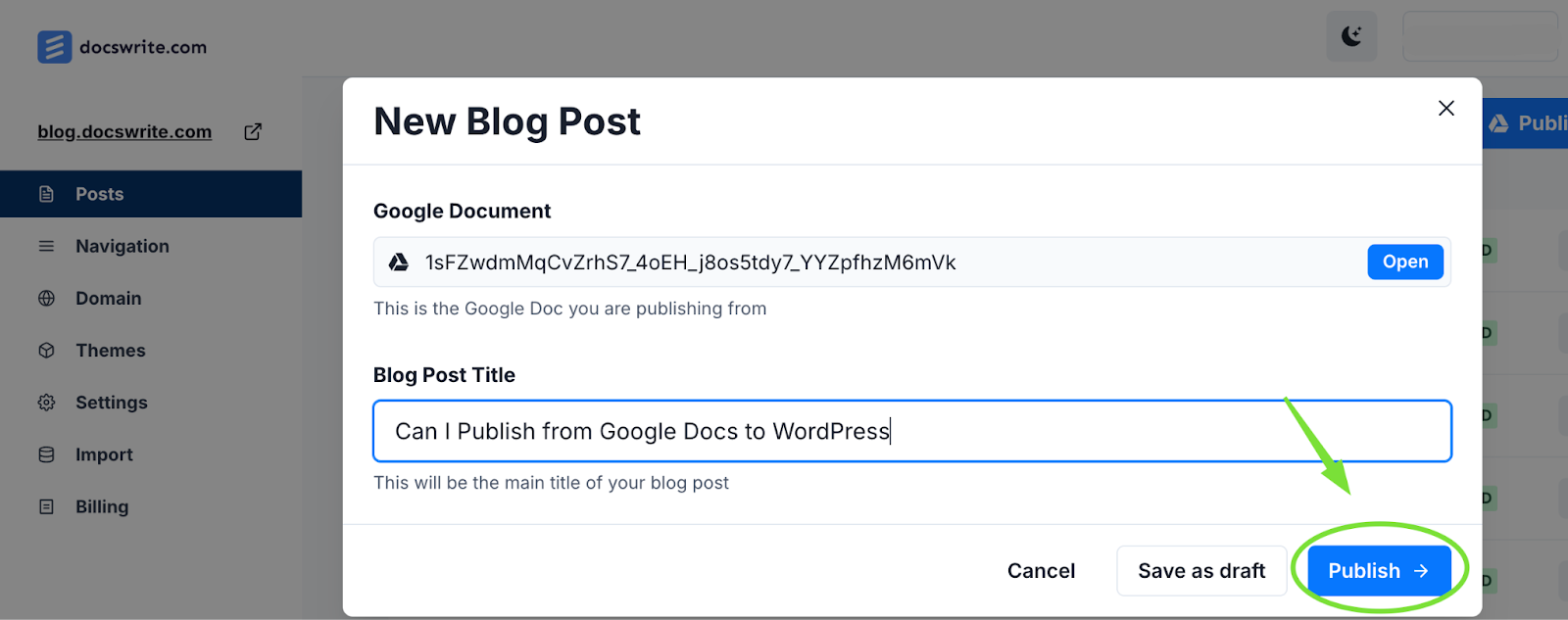Export Google Docs to WordPress with Docswrite Without Plugin

Moving content from Google Docs to WordPress can be challenging, especially if you’re looking to maintain formatting and avoid unnecessary plugins. Thankfully, Docswrite offers a streamlined solution to export Google Docs directly to WordPress without needing additional plugins. Below, you’ll find a step-by-step guide on how to use Docswrite to make this process smooth and efficient.
Step 1: Set Up Your Docswrite Account
- Visit the Docswrite Website
Head to the officialand sign up for an account if you haven’t already. You can sign up for a free account or choose a paid plan based on your needs. - Authenticate with Google and WordPress
Once logged in, connect your Google account with Docswrite by authorizing access to Google Drive. Next, link your WordPress site by entering your WordPress credentials, allowing Docswrite to export your document seamlessly.
Step 2: Prepare Your Google Docs Document
- Edit and Format Your Content
Make sure your document in Google Docs is ready for publishing. Edit and format text, add headings, and include links or images where necessary. The formatting should be clean and consistent, as Docswrite will carry over most formatting to WordPress. - Organize Images and Media
If your Google Doc contains images, ensure they’re formatted correctly (using inline or wrap text options). Docswrite will detect and upload these images to your WordPress media library.
Step 3: Export the Document via Docswrite
- Choose Your Google Doc in In your Docswrite account, navigate to the Google Docs tab. Here, select the document you want to export to WordPress. You’ll have options to adjust settings such as categories, tags, and featured images.
- Set Export Options
Docswrite allows you to choose whether you want your content exported as a draft or published immediately. Select your desired option and review any formatting settings available for customization. - Start the Export
Click the Export button, and Docswrite will automatically send the document to your WordPress account. You’ll receive a notification when the export is complete.



Step 4: Review and Publish on WordPress
- Log in to WordPress
After exporting, log in to your WordPress dashboard to review the post. Docswrite ensures the content retains most of its Google Docs formatting, but a final review will help confirm everything appears as expected. - Check for Formatting Consistency
Ensure that headings, bullet points, and images are displayed correctly. Adjust any minor discrepancies if needed. - Publish or Schedule the Post
Once everything looks good, hit Publish to make the post live on your site, or choose Schedule if you’d like it to go live at a specific time.
FAQs
1. Can Docswrite retain Google Docs formatting on WordPress?
Yes, Docswrite maintains most of your document’s formatting, including headings, lists, and hyperlinks, so your content remains visually consistent.
2. Does Docswrite export images from Google Docs to WordPress?
Absolutely. Docswrite detects images in your Google Doc and uploads them to your WordPress media library.
3. Is Docswrite free to use?
Docswrite offers a free plan with basic features, while advanced options are available in their paid plans.
4. Do I need to install a WordPress plugin for Docswrite to work?
No, Docswrite doesn’t require a plugin. It directly connects your Google Docs and WordPress accounts for seamless exporting.
5. How can I troubleshoot if the export fails?
If you encounter issues, ensure your Google and WordPress accounts are properly connected in Docswrite. Their support team is also available to assist with troubleshooting.